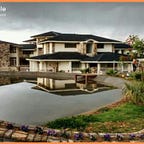-How to Incorporate Digital Stories in the Classroom
How we narrate and experience stories have evolved over these years. Before the word, stories were committed to memory and passed down from generation to generation. Bound books engaged our imaginations as we tend to picture a story’s characters and to set in our heads. Movie magic allowed us to look at a storey unfold. Today, technology has created storytelling more interactive. We can currently become a part of the story.
Education is an evolutionary experience. Owing to this, academics must embrace technological advances and learn aboard their students. Advancement in technology is one such reason behind the revamping of the academic syllabus of boarding schools in Dehradun, like Ecole Globale, where school admin has installed smart boards in the class for a better understanding of the subject.
In these modern times, students are visual learners and work best after they are able to have an interactive experience. Digital storytelling will this, but it will be a complicated process. Owing to this, it’s up to academics to break it down so that students take notice of the different skills needed to create a transmission experience. The subsequent elements are writing, photography, video, reading aloud, and numerous Web-based skills. In some instances, students might participate altogether; these activities or academics may offer them a place to begin. To illustrate, they’ll show students a photograph and lead a brainstorming or concept-mapping session, which will facilitate to get them started.
Concept Mapping
In the concept-mapping stage, children decide on what form of the story they need to inform. They will either bring in photos of their own, or they will realize pictures on stock photo websites, which will lead them to a concept. If students understand photos on-line, they must learn about fair use and copyright in order that they’re not using an unauthorized picture. Everything is thrown against the wall, and children realize a concept they will work on. They’ll need to inform their own story or make one up. Taking notes and having a general definition can facilitate them to get started.
Pre-writing and Writing
Even once dealing with visual media, good writing skills are still necessary. The structure of writing is different in a digital story as a result of no one frame will be overloaded, and therefore the frames overall ought to maintain a way of balance. The writing ought to be through with the visuals in mind. Students are also assigned different sections to write and that they will help edit one another’s work to assist in making sure the story can sound smooth and entertaining. Academics will check a student’s work and offer suggestions on the way to get the ultimate draft to be the best it will be.
Creating Slideshows or Video
For younger students, slideshows are easier to use in a digital story. These will be arranged out and placed in an order that connects with the written story. Short video clips will be incorporated too. Students might want to record a video introduction, so use slides for the rest of their digital story presentation. Some of this will be done in the concept mapping stage; however, once there are drafts of the story written, it’s going to be necessary to either add additional pictures or take them out where they no longer fit. If students cannot realize an appropriate photograph, they will conjointly draw photos that represent their story.
Recording the Story
To give the facet of digital stories that “oral tradition” feel, students will record themselves narrating the story. Typically the story is also straight reading, and other times different students will truly play characters in a story. Though it’s not quite a movie, a digital story displays several of the elements of a movie or play and might facilitate students develop acting skills as well as connect with an audience and their peers. Digital story segments are manageable; therefore, solely short clips can be recorded. For many projects, Windows Sound Recorder will be sufficient. Students may additionally do some recording on their smartphones.
Adding Music and Effects
It is doubtless that students can notice the similarity between creating a digital story and making a movie, and many may want to feature sound effects except for their voices to the story. If it’s a windy day within the story, wind noises will be added to the background. Intense music will be added to the severe components of the story. Background sound will enhance the final product; however, it shouldn’t be used to the purpose where it overshadows the story.
Putting it along
With numerous social media, there are some ways to require digital stories in the classroom and place them in the wider world. Of course, privacy problems are invariably a concern. Parental permission ought to be obtained before posting to social networks, and personal channels should be used.
There are many ways to put the ultimate touches on a digital story. Using a digital story software system, the various elements will be layered along so as to smooth out the whole project. Academics will decide if they need every student to take on a single component, or if they need each person doing a little of everything. Regardless of which approach is taken, children will learn the importance of collaboration in creating something they will be proud of.
Arthur Chiaravalli, Matthew R. Morris, Barry Davret, Ruben Brosbe, Steve Blank, Paul Ellsworth, Johnny, Clay Shirky, Hank Green, Sunny Ray
